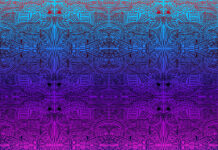Jeppson’s Malört is a unique and infamous spirit that has become synonymous with Chicago’s drinking culture. Here are ten important things to know about Malört:
Origin and History:
Malört has its roots in Sweden, where it was initially crafted as a schnapps-style liqueur. However, its claim to fame is as a Chicago institution, particularly associated with the brand Jeppson’s Malört. Carl Jeppson, a Swedish immigrant, introduced Malört to the Chicago market in the 1930s, and it has since become a polarizing and iconic spirit in the city.
Distinctive Flavor Profile:
Malört is renowned for its intensely bitter flavor profile. The primary ingredient responsible for this bitterness is wormwood, a botanical known for its bittering properties. The bitterness is accompanied by herbal and citrus notes, creating a taste that can be challenging for many drinkers. The unique flavor has become a badge of honor for those who appreciate the spirit.
Cultural Significance in Chicago:
Malört holds a special place in Chicago’s drinking culture. Often regarded as a rite of passage for locals and a symbol of Chicago toughness, sharing a shot of Malört is considered a unique social experience. It has become a part of the city’s identity, and its consumption is often accompanied by both grimaces and laughter.
Jeppson’s Malört Brand:
While Malört as a style of spirit exists beyond Chicago, Jeppson’s Malört has become the most recognized brand associated with the city. The brand has a storied history, with various ownership changes over the years. The distinctive label and the iconic taste make Jeppson’s Malört a recognizable and enduring part of Chicago’s drinking scene.
Local Traditions and Challenges:
Malört has inspired various local traditions and challenges within Chicago’s drinking establishments. One such tradition is offering Malört to unsuspecting out-of-towners, capturing their reactions to the bitter surprise. Additionally, there are “Malört face” competitions where participants showcase their best expression after taking a shot.
Expansion and Popularity:
In recent years, Malört has experienced a resurgence in popularity, extending beyond Chicago. Craft cocktail enthusiasts and adventurous drinkers have embraced the challenge of the bitter spirit, leading to an increased demand for Malört in bars and liquor stores outside of its traditional home.
Cocktail Culture:
While Malört is often consumed as a straight shot, inventive mixologists have incorporated it into cocktails to balance its bitterness with other flavors. Some popular Malört cocktails include variations of classic drinks like the Negroni, offering a unique twist to familiar recipes.
Cultural References:
Malört’s unique reputation has not gone unnoticed in popular culture. It has been referenced in various media, including songs, podcasts, and television shows, further solidifying its status as a cultural phenomenon. The spirit’s ability to evoke strong reactions has made it a subject of fascination and discussion.
Ownership Changes:
Jeppson’s Malört has seen changes in ownership over the years, contributing to its intriguing history. In 2018, the brand was acquired by CH Distillery, a local Chicago distillery known for its craft spirits. This change in ownership marked a new chapter for Malört, bringing it under the umbrella of a dedicated and local distillery.
Cult Following:
Despite its divisive taste, Malört has cultivated a devoted fan base. Its popularity extends beyond mere novelty, with enthusiasts appreciating the spirit’s uniqueness and the cultural connections it represents. Malört’s cult following ensures its continued presence in the Chicago drinking scene and beyond.
Malört is not just a spirit; it’s a cultural phenomenon deeply embedded in the identity of Chicago. Its bitter taste, local traditions, and distinctive presence in popular culture have elevated Malört from a regional spirit to a symbol of resilience, camaraderie, and the unapologetic spirit of the Windy City.
The distinctive nature of Malört extends beyond its flavor and cultural significance—it’s a spirit that elicits strong reactions and fosters a sense of camaraderie among those who choose to partake in the experience. Its bitter complexity, attributed to the inclusion of wormwood, challenges the palate and distinguishes Malört from more conventional spirits. While the initial shock of the bitter taste can be jarring, the spirit has found a place in the hearts of those who appreciate its idiosyncrasies and proudly share the tradition of introducing it to newcomers.
Jeppson’s Malört, with its enduring legacy and ownership changes, has weathered the years and maintained its status as a Chicago institution. The acquisition by CH Distillery marked a strategic move to keep the brand rooted in the local craft spirits scene, ensuring that Malört remains an authentic representation of the city’s drinking culture. This change in ownership has also brought about a renewed interest in the spirit, with CH Distillery embracing the challenge of preserving Malört’s legacy while introducing it to new audiences.
As Malört gains popularity beyond the confines of Chicago, it has become a symbol of adventure for those seeking unique and unconventional spirits. Craft cocktail enthusiasts and adventurous drinkers appreciate the complexity that Malört brings to mixology, experimenting with its bitter notes to create innovative and surprising concoctions. The spirit’s versatility in cocktails showcases its potential to be more than just a rite of passage—it’s an ingredient that adds a bold and unexpected dimension to the world of craft beverages.
Malört’s presence in popular culture reflects its status as a cultural touchstone. Songs dedicated to the spirit, podcast discussions on its divisive taste, and television appearances all contribute to its lore. The concept of the “Malört face,” capturing the grimaces and reactions of those tasting it for the first time, has become a meme-worthy phenomenon, further ingraining Malört in the collective consciousness.
The spirit’s cult following is a testament to the enduring allure of the unconventional. Enthusiasts, both in Chicago and beyond, proudly declare their allegiance to Malört, turning what could be a simple liquor choice into a badge of honor. The shared experience of partaking in a shot of Malört, complete with the expected expressions of surprise and laughter, fosters a sense of community and camaraderie among those who embrace the spirit.
In conclusion, Malört’s journey from a Swedish-style schnapps to a symbol of Chicago’s drinking culture is a fascinating exploration of how a spirit can transcend its origins and become a cultural phenomenon. Its bitter taste, local traditions, and enduring popularity showcase the unique and resilient spirit of Malört, making it more than just a spirit—it’s an experience, a tradition, and a symbol of the unapologetic and vibrant spirit of Chicago.


















